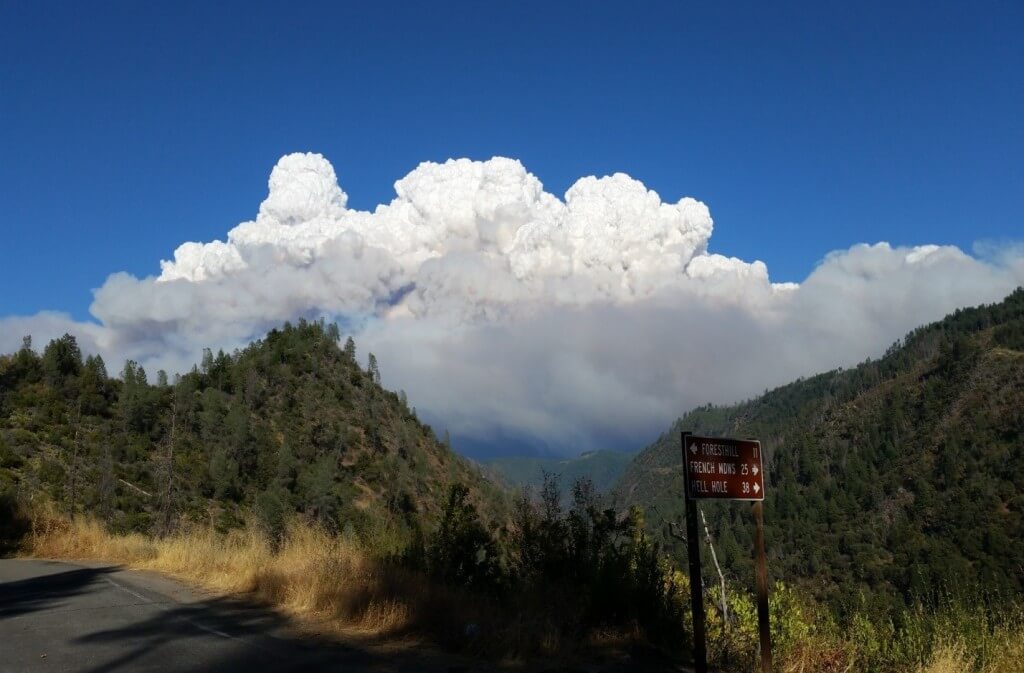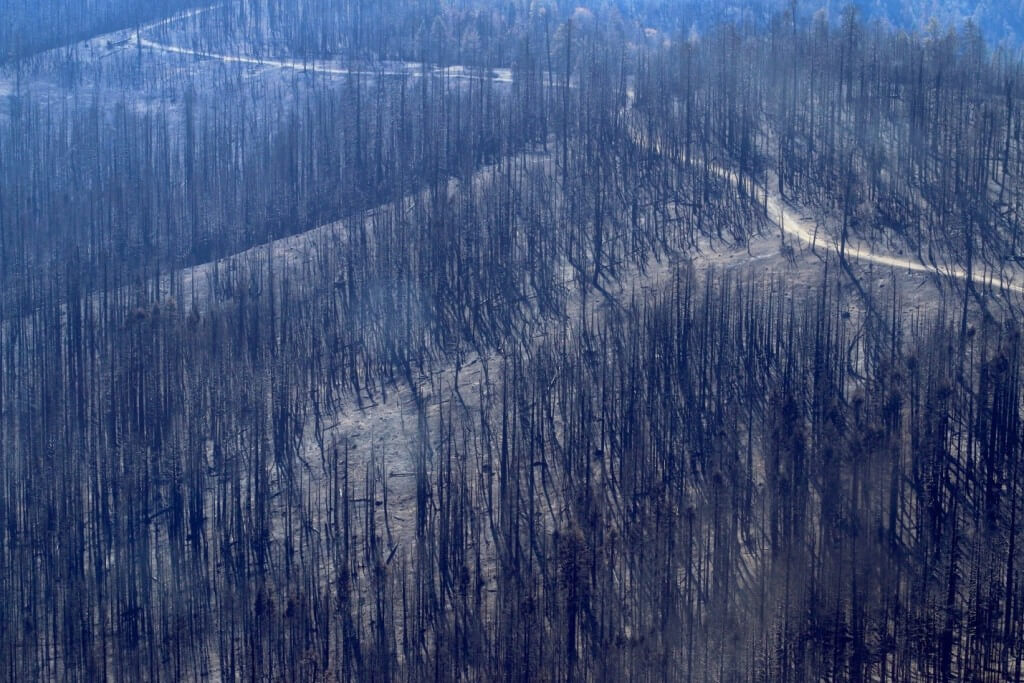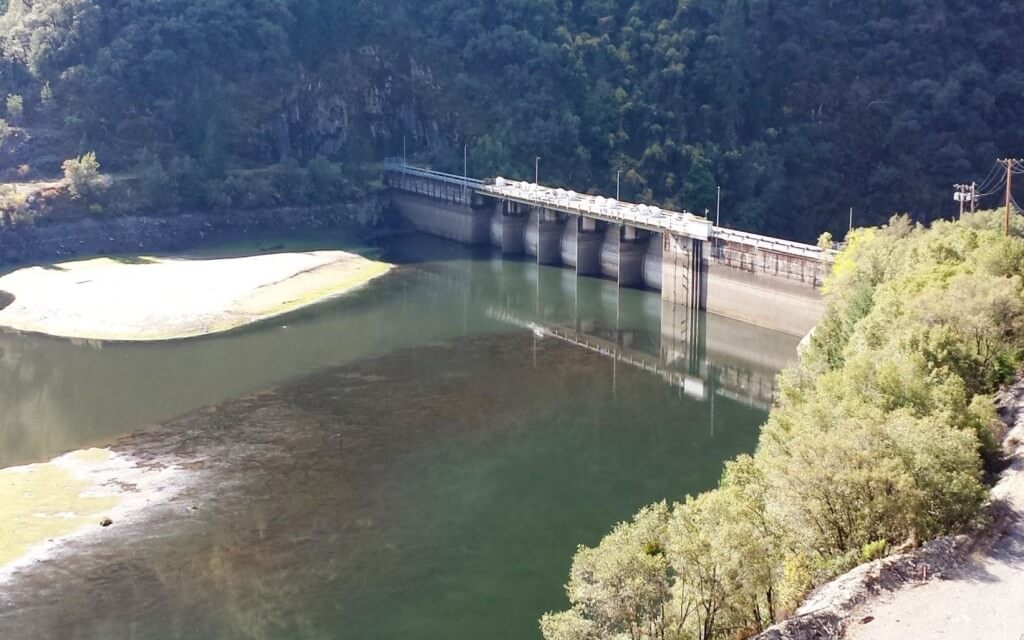Placer County Water Agency owns and operates the Middle Fork American River Project (MFP), providing water supplies, hydroelectric power, public recreational opportunities and environmental stewardship for the people of Placer County and the region. The people of Placer County built the Middle Fork Project in the 1960s for the long-term public benefit to be derived from beneficial uses of watershed resources. The water that PCWA delivers to ranches, farms, orchards and suburban areas throughout the County originates from the Yuba, Bear, American and Rubicon river watersheds. PCWA was created to ensure, and remains committed to supporting, diligent management of those watershed resources.
The MFP is located in the Middle Fork American River watershed, about 2 hours east of Sacramento, California. Our watershed spans some 412 square miles, and provides enough drinking water for 250,000 citizens and enough renewable hydroelectric energy for 100,000 homes. 36% of this area, some 150 square miles – have burned since 2000. While some of these fires have been mild in nature, others have been increasingly devastating because of the intensity and severity with which they engulf the landscape. This troubling trend, fueled by decades of active fire suppression and changes in forest management policy and exacerbated by natural drought conditions has led to a situation that puts California’s water supplies at great risk, and leaves local agencies bearing the consequences. In 2014, PCWA watershed lands were once again destroyed by catastrophic wildfire.
King Fire
Our experience with the King Fire in 2014 offers a good example. The King Fire was ignited on the afternoon of September 13, 2014 in El Dorado County. For four days the fire burned in a mix of privately managed timberlands and the El Dorado National Forest, growing to approximately 20,000 acres by Wednesday morning, and spreading at a moderate rate. Wednesday afternoon brought extremely low humidity and increased wind speed, which drove the fire into the remote and densely forested Rubicon River canyon, an important tributary to the American River. Once it reached the Rubicon canyon, the fire exploded.
In the next twelve hours, the fire grew by almost 50,000 acres, making a run of almost sixteen miles overnight. Fire officials on the ground used words like “unprecedented” and “unheard of” to describe the speed and intensity at which this fire destroyed the landscape. A rare mid-September rain storm and a calming of wind conditions were the only two factors that halted this fire from continuing its advance into the Lake Tahoe watershed and even more devastating consequences.

The King Fire devastated the Rubicon River watershed with high-severity incineration. Complete loss of vegetative cover exposed soils to erode on thousands of acres of steep, sloping river canyons. Sediment and debris derived from this erosion threaten the integrity, functioning and maintenance of hundreds of millions of dollars of water and power infrastructure, as well as miles of aquatic and riparian habitat vital to frog and fish species of concern to state and federal regulatory agencies.
All told, the King Fire burned 153 square miles in three watershed and two counties, more than 60% of which burned at high intensity. The costs were tremendous, and are ongoing:
- $118,500,000 in direct firefighting costs was borne by the public;
- $8,000,000 in immediate costs to lost water and energy infrastructure was borne by local utilities like mine;
- Untold costs to roads, cultural resources, and wildlife habitat, and soil resources;
- Ongoing costs to local utilities that must now deal with the aftermath.
The Aftermath

The effects of large catastrophic wildfire on natural and man-made infrastructure lasts for decades, and the effects on the forest itself can last for centuries. In the case of water and hydroelectric utilities that operate in California’s watersheds, the aftermath is often worse than the event itself.
Wildfires in the Serra tend to occur at the worst possible time of year, at the end of summer. Not only are forest fuels at their driest, but the transition from the arid California summer to the wet fall can happen quickly and with devastating results. Particularly in the case of high-intensity fire, trees whose root systems once held steep slopes in place are now dead. Soils that were once a rich and stable organic ecosystem that was resistant to erosion are now baked into a loose cake which has a tendency to reject water from rain events and then all at once become a muddy slurry that tumbles off of canyon walls and into rivers and streams. As the receivers of mud, rock and dead trees, our river systems become overwhelmed with this debris and transport it downstream during high flow events.
Once this debris enters lakes and reservoirs, it fills in valuable storage space, blocks spillways and ruins equipment and generating machinery. PCWA has experienced this before. The Star Fire which burned in 2001 is still depositing large dead trees and tons of sediment into our facilities 14 years later. We, like many other utilities in the Sierra, must regularly, and at great cost to our ratepayers, clean our reservoirs of sediment, rock and trees or they would become useless mud flats.
In the case of the King Fire, the U.S. Forest Service estimates 300,000 tons of topsoil are poised to erode into Rubicon River from King Fire burned area. PCWA’s Ralston Powerhouse and Afterbay Dam are located a short distance below 19 miles of scorched Rubicon River canyon and when this reservoir fills up, hydropower production and water for our citizens is stopped for months at a time. This stretch of river has also been identified by PCWA in collaboration with regulatory agencies as important habitat for frog and fish species of concern, habitat which will be severely impacted by fire-induced sedimentation.

This impact can last for many years. While trees and brush can begin to regrow within a decade of even an intense fire, the fertile soils that have taken millennia to establish are damaged for many centuries. This long after-effect means that our facilities are ultimately less valuable, our water dirtier, and our ability to serve a growing California economy water and energy products diminished for many decades.
Destined for Disaster?
Recent scientific findings point to an increase in the frequency and intensity of mega-fires in the West. While there are many potential causes, we believe that at least part of the problem lies with a century of wildfire suppression and a recent reduction in active timber management on public lands. It is clear in our watershed that fuel loads, particularly small trees and brush, have increased to an extent that where a person could once walk through a forest of large, mature trees, one now finds impenetrable brush fields and thousands of small, unhealthy trees. Under natural conditions, the Sierra landscape would have seen much more frequent and lower intensity fires which would have cleaned the forest of these fuel loads and left the forest healthier for it.
In our view, it is not possible to return to this natural pattern without great risk to valuable human infrastructure. However, we believe that using a combination of techniques that include active mechanical harvesting of smaller fuels, logging of appropriate larger trees, controlled burning, and replanting, land managers can return the system to a much healthier equilibrium that brings the forest into balance without the risk that untrammeled natural burning would incur.
Water and hydropower utilities throughout the west have come together with private landowners and local governments to begin the conversation of returning our forests to a more sustainable condition. We believe that by applying the following principles to our publicly owned forest and rangelands, we can achieve a balanced result that will benefit our water supplies, our recreational opportunities, ecosystem health, and help to restore communities that rely on natural resources to power their economies.
Why Federal Land Policy Matters in California
Approximately 45% of California is owned and managed by the federal government, and well over 75% of our headwaters are managed by the US. Bureau of Land Management or the U.S. Forest Service. This means that while local agencies own and operate water and hydroelectric systems through-out these headwaters, the land from which our water supplies are derived are managed by policies that are not locally derived and which often have far-reaching economic and societal impacts throughout the state.
PCWA is one of some 50 water utilities that operate in the Sierra Nevada range, and one of about twice that many in the mountain headwaters throughout the state, providing 65% of California’s water supply on an annual basis. Simply stated, California’s mountain headwaters and the rain and snow that falls in these watersheds make it possible to supply clean drinking water to 38 million Californians and the homes, farms and businesses that support a $1.6 trillion dollar annual economy.
Land management in the West is at an important crossroad, and requires bold actions by Congress and compromise on the part of many stakeholders. As water and hydropower utilities that serve a growing population and are tenants of federal lands we have a vested interest in the success of headwaters management. The science of forest management has advanced greatly, and to put it simply, we know how to do things better to achieve multiple ecosystem and societal needs in a balanced way, but we require flexibility in federal law and federal agency rules and regulations to test, experiment an ultimately apply the best available science to forest management for the benefit of all.
Congress appears poised to take on some of these federal land management challenges in 2015. The important questions revolve around funding large wildfires through FEMA vs. robbing the regular Forest Service appropriations budgets, increasing the pace and scale of thinning projects on public lands, and critical NEPA and ESA reforms to allow much accelerated post-fire restoration activities. We believe all water agencies in California should lend their voice to these important changes.
The Association of California Water Agencies also has an excellent document entitled “Improving the Resiliency of California’s Headwaters,” which can be seen at: Association of California Water Agencies.
Mr. Fecko provided much of this information in testimony before the House of Representatives Subcommittee on Federal Lands on April 23, 2015.



